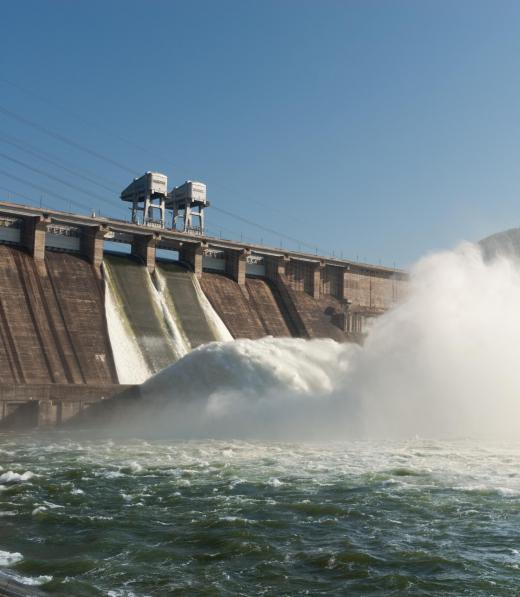What is Thermal Science?
 Mary McMahon
Mary McMahon
Thermal science is a branch of scientific inquiry which deals specifically with heat and energy, through thermodynamics and heat transfer. Thermal science is used in many practical applications, such as heating systems, energy generation, and experimentally as well. Thermal science is usually considered to be a branch of engineering, because in practical applications it is most frequently used by engineers who are attempting to design more safe and efficient heating and energy generation systems.
Thermal science looks first at thermodynamics, which is a branch of physics that incorporates several variables and how they interact to form heat or energy. Thermodynamics examines the interaction of temperature, pressure, and volume within a system to create heat, energy, or both. The metamorphosis of energy in the pursuit of power and heat is the focus of thermodynamics, which refers to the energetic output of a device as “work,” the force needed to move an object. Thermodynamics is governed by several rules, as are most scientific disciplines.

The first rule is that it is not possible to extract more energy from a system than is input, because energy can only be converted into a new form, not created or destroyed. The second is that all machines will lose efficiency between input and output energy in a process called entropy, where energy is actually lost. These rules govern energy conversion systems from hydroelectric dams to the gasoline engine, and are a crucial part of thermodynamics.
Thermal science is an attempt to balance heat transfer and the laws of thermodynamics in an attempt to come out ahead when generating energy. Thermal science incorporates several scientific disciplines, all dealing with energy, as scientists and engineers work together to use thermal energy more efficiently. Thermal science looks at new ways to extract heat, insulate energy, and utilize it in the most practical manner possible.
Students of thermal science are interested in exploring alternative modes of energy collection, as well as maximizing human safety around energy conversion systems. When thermal science is used in a practical application, engineers look at heat transferring properties of objects or energy systems, as well as trying to determine what the overall balance of energy within a system is. In addition, engineers look at the principles of thermodynamics, which include chemical and physical reactions in addition to the primary laws.
When used theoretically, physicists who focus on thermal science are interested in exploring how electricity is converted, and how systems for energy conversion can be improved. The study of thermal science on a theoretical level has led to the introduction of many energy saving devices, as well as increases in efficiency and safety. In both cases, thermal science is looking at fundamental interactions between physical and chemical processes, and the result.
AS FEATURED ON:
AS FEATURED ON:











Discuss this Article
Post your comments